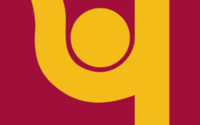SBI Junior Associates Numerical Ability Question Papers for Prelims and Mains Exam
1. The difference between 42% of a number and 28% of the same number is 210. What is 59% of that number?
A. 630
B. 885
C. 420
D. 900
E. None of these
2. What approximate value should come in place of the question mark (?) in the following questions?
4275 ÷ 496 X 21 X 21 = ?
A. 3795
B. 3800
C. 3810
D. 3875
E. 3995
3. A canteen requires 112 kgs. of wheat for a week. How many kgs. of wheat will it require for 69 days?
A. 1,204 Kgs.
B. 1,401 Kgs.
C. 1,104 Kgs.
D. 1,014 Kgs.
E. None of these
4. If an amount of Rs. 41,910/- is distributed equally among 22 persons. How much amount would each person get?
A. Rs. 1,905/-
B. Rs 2,000/-
C. Rs. 1,885/-
D. Rs 2105/-
E. None of these
5. The cost of 4 Cell-phones and 7 Digital cameras is Rs. 1,25,627/-; What is the cost of 8 Cell-phones and 14 Digital cameras?
A. Rs. 2,51, 254/-
B. Rs. 2,52,627/-
C. Rs. 2,25,i524/-
D. Cannot be determined
E. None of these
Directions (Q. 6 to 10) : Each of the questions below consists of a questions and two statements numbered I and II are given below it. You have to decide whether the data provided in the statements me sufficient to answer the question. Read both the statements and —
Give answer (A) if the data in Statement I alone are sufficient to answer the question, while the data in Statement II alone are not sufficient to answer the question.
Give answer (B) if the data in Statement II alone are sufficient to answer the question, while the data in Statement I alone are not sufficient to answer the question.
Give answer (C) if the data in Statement I alone or in Statement II alone are sufficient to answer the question.
Give answer (D) if the data in both the Statements I and II are not sufficient to answer the question.
Give answer (E) if the data in both Statements I and II together are necessary to answer the question.
6. What is the area of the circle?
I. Perimeter of the circle is 88 cms
II. Diameter of the circle is 28 ems
7. What is the rate of interest?
I. Simple interest accrued on an amount of Rs. 25,000/- in two years less than the compound interest for the same period by Rs, 250/-
II. Simple interest accrued in 10 years is equal to the principal
8. What is the number of trees planted in the field in rows and columns?
I. Number of columns is more than the number of rows by 4
II. Number of trees in each column is an even number
9. What is the area of the right-angled triangle?
I. Height of the triangle is three-fourth of the base
II. Diagonal of the triangle is 5 metres
10. What is the father’s present age?
I. Father’s present age is five times the son’s present age
II. Five years ago the father’s age was fifteen times the son’s age that time
Directions (Q. 11 to 15): Study the following graph carefully to answer these questions.

11. What is the ratio between the profit earned by Company A in 2004 and the profit earned by Company B in 2003 respectively‘?
A. 4 : 3
B. 3 : 2
C. 3 : 4
D. 2 : 3
E. None of these
12. What is the difference (in Crore Rs.) between the total profit earned by Companies E, F and G together in 2003 and the total profit earned by these companies in 2004?
A. 70
B. 75
C. 78
D. 82
E. None of these
13. What is the ratio between the total profit earned by Company C in 2003 & 2004 together and the total profit earned by Company E in these two years respectively?
A. 11 : 9
B. 9 : 10
C. 10:11
D. 11:10
E. None of these
14. What was the average profit earned by all the companies in 2003? (In Crore Rs. Rounded-Off to two digits after decimal).
A. 52.75
B. 53.86
C. 52.86
D. 53.75
E. None of these
15. Profit earned by Company B in 2004 is what percent of the profit earned by the same company in 2003 ?
A. 133.33
B. 75
C. 67.66
D. 75.25
E. None of these
Direction (Q. 16 to 20) : What should come in place of question mark (?) in the following questions?
16. 92.5% of 550 = ?
A. 506.45
B. 521.65
C. 518.55
D. 508.75
E. None of these
17. {12}^{4} X {12}^{13} = ?
A. {12}^{7}
B. {12}^{39}
C. {12}^{17}
D. {12}^{-7}
E. None of these
18. 12.22 + 22.21 + 221.12 = ?
A. 250.55
B. 255.50
C. 250.05
D. 255.05
E. None of these
19. 464 ÷ (16 x 2.32) = ?
A. 12.5
B. 10.5
C. 14.5
D. 8.5
E. None of these
20. 78 ÷ 5 ÷ 0.5=?
A. 15.6
B. 31.2
C. 7.8
D. 20.4
E. None of these
21. A bus covers a distance of 2,924 kms. in 43 hours. What is the speed of the bus?
A. 72 Kms./Hr.
B. 60 Kms./Hr.
C. 68 Kms./Hr.
D. Cannot be determined
E. None of these
22. If {9}^{3} is subtracted from the square of a number, the answer so obtained is 567. What is the number?
A. 36
B. 28
C. 42
D. 48
E. None of these
23. What would be the simple interest obtained on an amount of Rs. 5,760/- at the rate of 6 p.c.p.a. after 3 years?
A. Rs. 1,036.80
B. Rs. 1,336.80
C. None of these
D. Rs. 1,666.80
E. Rs. 1,063.80
24. What is 333 times 131?
A. 46,323
B. 43,290
C. 43,623
D. 42,957
E. None of these
25. The product of two successive numbers is 8556. What is the smaller number?
A. 89
B. 90
C. 94
D. 92
E. None of these
26. The owner of an electronics shop charges his customer 22% more than the cost price. If a customer paid Rs. 10,980/- for a DVD Player, then what was the cost price of the DVD Player?
A. Rs. 8,000/-
B. Rs. 9.500/-
C. Rs. 8,800/-
D. Rs. 9,200/-
E. None of these
27. What would be the compound interest obtained on an amount of Rs. 3,000/- at the rate of 8 p.c.p.a. after 2 years?
A. Rs. 501.50
B. Rs. 495/-
C. Rs. 499.20
D. Rs. 510/-
E. None of these
28. What is least number to be added to 4321 to make it a perfect square ?
A. 32
B. 36
C. 34
D. 38
E. None of these
29. 45% of a number that number?
A. 162
B. 152
C. 132
D. 142
E. None of these
30. Find the average of the following set of Scores?
221, 231, 441, 356, 665, 525
A. 399
B. 428
C. 407
D. 415
E. None of these
31. If {78}^{2} is subtracted from the square of the number, the answer so obtained is 6,460. What is the number?
A. 109
B. 111
C. 113
D. 115
E. None of these
32. In an examination, it is required to get 40% of the aggregate marks to pass. A student gets 261 marks and is declared failed by 4% marks. What are the maximum aggregate marks a student can get?
A. 700
B. 730
C. 745
D. 765
E. None of these
33. Pinku, Rinku and Tinku divide an amount of Rs. 4,200/- amongst themselves in the ratio of 7 : 8 : 6 respectively. If an amount of Rs. 200/- is added to each of their shares, what will be the new respective ratio of their shares of amount?
A. 8:9:6
B. 7:9:6
C. 7:8:6
D. 8:9:7
E. None of these
34. Ms. Suchi deposits an amount of Rs. 24,000/ to obtain a simple interest at the rate of 14 p.c.p.a. for 8 years. What total amount will Ms. Suchi get at the end of 8 years?
A. Rs. 52,080/-
B. Rs. 28,000/-
C. Rs. 50,880/-
D. Rs. 26,880/-
E. None of these
35. The average of 5 consecutive even numbers A, B, C, D and E is 52, What is the product of B & E?
A. 2912
B. 2688
C. 3024
D. 2800
E. None of these



